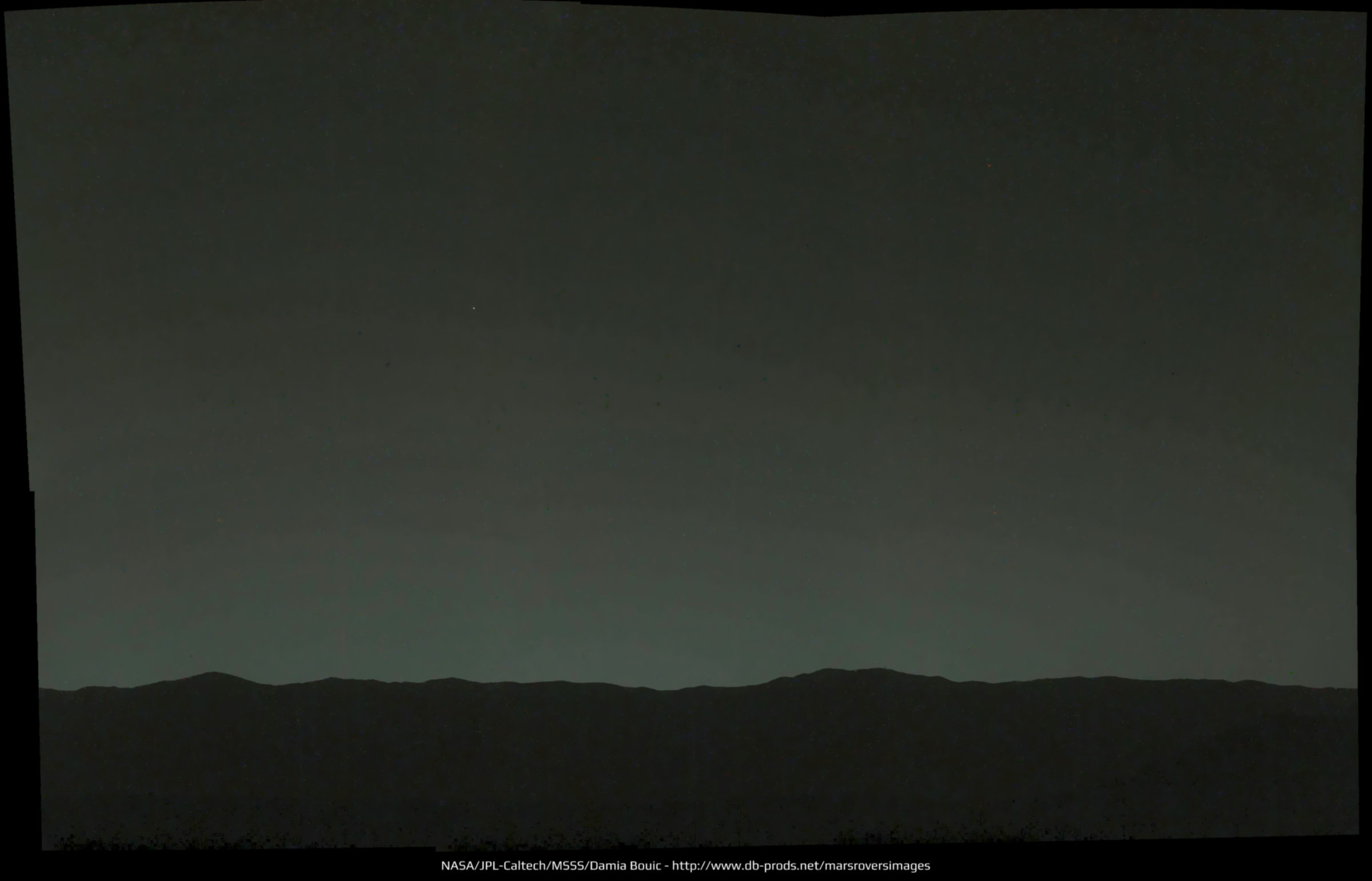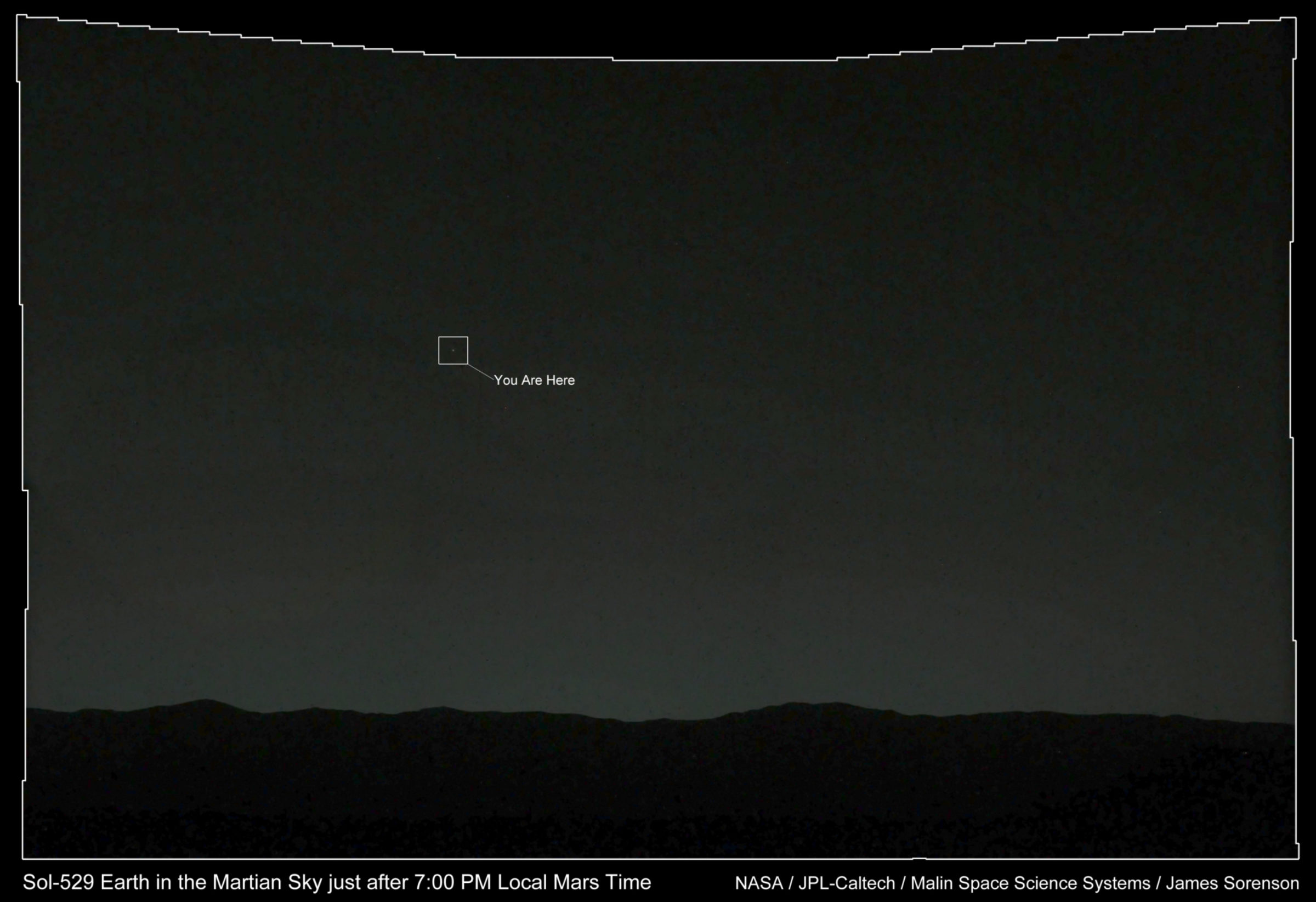Emily Lakdawalla • Feb 05, 2014
Looking Backward: Curiosity gazes upon the setting Earth
Look again at that dot. That's here. That's home. That's us.
Carl Sagan wrote those words about a view of Earth from beyond Neptune, captured by Voyager 1 on February 14, 1990. No matter how far we go, Earth pulls at us, tempting us to gaze homeward. Curiosity looked skyward to photograph Earth a few days ago, on the 529th day of her mission to Mars.
I've been visiting midnightplanets.com hourly for the last few days, waiting for the full-resolution images to come down. The other amateurs at unmannedspaceflight.com were looking for the images, too, and since the images hit the web 7 hours ago, several of them have produced their own unique takes on the data set. Here it is, as processed by Damia Bouic: a bright point of light in the twilit sky, setting toward the distant rim of Gale crater. Earth is the little isolated bright dot, left of center.

Here is an annotated version, processed by James Sorenson. You are here.

The actual observation consisted of three Mastcam-100 images taken within the space of one minute (18:47 local time) of Earth among some stars, followed by a 3-by-2 Mastcam-34 mosaic of the twilit horizon. The original image data is noisy, a result of the low light levels; quite a bit of artistic license was involved in the creation of the pretty pictures. Here's an example bit of data cropped from the mosaic, displayed at its full resolution without any correction, so you can see what they had to start with. Earth is not in this part of the photo (I wanted to show you a bit that included the horizon). You can see all the original images here. This is the one that contains Earth.
How did they figure out which dot was Earth? Partly by subtracting one frame from another (which eliminates "hot pixels" that are bright in all frames); partly by using software like Stellarium to figure out which dot should have been Earth; and partly by an understanding of how an actual light source looks a bit different from a hot pixel, though that difference is a bit hard to discern in the JPEG-compressed data that is shared with the public via the raw images website.
The Mastcam-100 image sequence is particularly interesting. Earth moves slightly from frame to frame -- that's Mars' rotation making it set toward the western horizon.

One of the amateurs (who goes by a pseudonym, fredk) noticed a tiny dot preceding Earth in the setting motion. Could that be the Moon? Let's do the numbers. A look at the solar system simulator shows that the Moon was very nearly as far from Earth as it gets at the time of the observation -- 360,000 kilometers from Earth. At the same time, Earth is relatively far from Mars, about 159 million kilometers. So Earth and the Moon were separated by about (360k/159000k)=2.3 milliradians. The angular resolution of the Mastcam-100 is 0.074 milliradians. So they should be separated by 30 pixels. I measure 25. Could be the Moon, though the math didn't work out quite as close as I'd've liked it to. This animation is less pretty than the one above, because the Moon (if that's what it is) is a much, much dimmer target than Earth, so it's nearly lost among the noise and JPEG compression artifacts. A better version can be made from the science data once it becomes available.
Stacking the images together, fredk achieved this view of Earth and the Moon, as seen by a telephoto camera mounted on the head of a rover built on Earth but sitting on Mars.
Support our core enterprises
Your support powers our mission to explore worlds, find life, and defend Earth. You make all the difference when you make a gift. Give today!
Donate

 Explore Worlds
Explore Worlds Find Life
Find Life Defend Earth
Defend Earth


